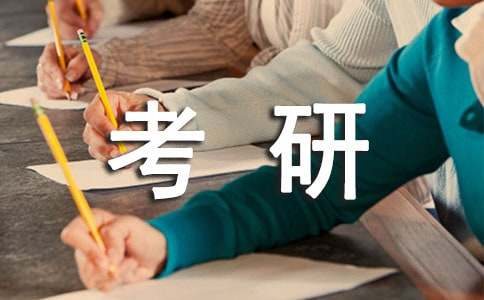- 相关推荐
考研英语阅读理解模拟题(历史学)
考研英语是个非常独特的考试,考研英语考的并不是你的英语水平有多好,而是你多会做考研英语的卷子,以下是为大家分享的考研英语阅读理解模拟题(历史学),供大家参考借鉴,欢迎浏览!

Half the game is 90 percent mental,“ Yogi Berra once said, or something like that, and science is now getting around to putting his aphorism to the test. Researchers including Debbie Crews of Arizona State University and John Milton of the University of Chicago have been studying patterns of brain activation——not in baseball players but in golfers, who make better subjects because they dont move around as much and the electrodes stay stuck to their heads. Yogi might have been surprised by the researchers conclusion, though: the better the golfer, the less brain activity he shows in the seconds before he makes his shot.
Crews, a sports psychologist who studies putting——even the minimal agitation of a chip shot can upset her experimental apparatus——has found that a key difference between amateurs and pros lies in the left hemisphere. This is the seat of logic, analysis, verbal reasoning and the kinds of thoughts——Maybe I should just kind of squinch over a little more to the left——that you never imagine crossing Tiger Woodss mind. Professionals, once theyve determined how to make a shot, follow an invariable routine that renders conscious thought unnecessary. “How you think is probably more important than what you think,” Crews says. “Quieting the left hemisphere is really critical.”
Or, to put it another way, when Milton asked some LPGA golfers what they thought about just before taking a shot, they answered: nothing. To test this, he rounded up a half-dozen pros and an equal number of amateurs and had them imagine making a specific shot——a wedge shot of 100 yards to the green, with no wind——while monitoring their brains in a functional magnetic resonance imaging machine. “The professionals are just much more specialized and efficient,” Milton says. “You put in a quarter and you get your shot.” The amateurs, by contrast, showed more total brain activation, involving more areas of the brain. In particular, amateurs activated the basal ganglia——involved in learning motor functions——and the basal forebrain and amygdala, responsible for, among other functions, emotions. “Theyre not fearful or anxious,” Milton says, “but they get overwhelmed by details, by the memories of all the shots theyve missed in the past.” Some of his subjects worried about hitting the ball into the water, which was curious, because he hadnt even mentioned a water hazard in describing the imaginary shot to them.
Professional athletes, as a rule, know how to keep focus, although there are exceptions, like Chuck Knoblauch, the Yankee second baseman who suddenly lost the ability to make a routine throw to first base. Milton is already trying to apply these lessons to stroke and other rehabilitation patients who have to relearn skills like walking; he recommends putting more emphasis on visualization and improving mental focus. In many aspects of life, it seems, half the game really is 90 percent mental.
注(1):本文选自Newsweek; 6/2/2003, p14;
注(2):本文习题命题模仿对象2004年真题Text 4(个别题目顺序加以调整);
1. The views of Yogi Berra and researchers including Crews and Milton are ________.
[A]similar
[B]identical
[C]opposite
[D]complementary
2. We can learn from the text that the difference between pros and amateurs lies in
_______.
[A]the activity of the left hemisphere
[B]the way of their thinking
[C]the ability to control one‘s brain
[D]the ability to forget the past failures
3. Tiger Woods, according to the text, is probably ________.
[A]a professional golf player
[B]a professional baseball player
[C]a sports psychologist
[D]a researcher
4. What is the key to the success of golfers according to the text?
[A]Not to think of anything related to your past losses.
[B]To be more specialized and efficient.
[C]Try to activate your whole brain.
[D]Quiet your left hemisphere and think of nothing.
5. What can we learn from the last paragraph?
[A]What the researchers have found proves Yogi Berra‘s words.
[B]Baseball player should do as Yogi Berra said.
[C]Mentality plays a very important role in many aspects of life.
[D]Sports and medicine share some common principles.
答案:CADBC
拓展:考研英语阅读理解的制胜法宝
阅读理解向来是英语学习者的一个非常强大的敌人,阅读材料的广、难、深更是让许多英语考试备考者扎耳挠腮、望而却步。而这个最强大的敌人正是决定我们考试成败的关键因素。因此攻克阅读理解亟不可待。
英语阅读理解能力其实就是真正读懂英文的能力,其中包括利用阅读技能读懂文章的能力,并不是运用某些所谓技巧应试的能力。如果只关注所谓的应试技巧,应试能力可能会有提高,但是,阅读理解能力并不见得有质的提高。而如果具备了较高的、真正的阅读理解能力,能够真正读懂文章,同时能够运用某些应试技巧,则肯定可以考出好成绩。下面我就如何提高阅读能力给大家提几点建议。
重点推荐:
1、广泛涉猎,扩大阅读面。
英语考试的阅读素材选取非常灵活和广泛,从商业经济到社会文化再到科普教育等等,而这些阅读的文章往往难度都比较大,要想在考试中自如应对阅读理解必须在平时就多读这类文章,养成一种阅读的习惯,才能在考试中提高阅读速度和理解能力。
2.养成二次阅读习惯,培养逻辑推理能力
很多书上要求学生学会分析文章的结构,其实就是要求学生提高逻辑推理能力。在平时练习中,学生做完阅读,唯一可做就是对答案,事实上,纠正答案后对文章的再次阅读往往至关重要。第一遍读文章时,我们应当模拟考试的紧张气氛,尽量高质快速。但,对完答案后,我们有充足的时间再次阅读文章。第二次阅读文章我们的目的不在是获取信息,而是把握文章的布局安排,分析作者的意图。我们必须带着思考再次阅读文章
【考研英语阅读理解模拟题(历史学)】相关文章:
考研英语答题技巧:阅读+作文10-28
英语四级阅读理解练习题01-20
考研英语阅读四大题型命题思路解析07-26
初中语文阅读理解教案03-25
12月英语四级阅读理解真题及答案04-29
英语考研真题01-07
6月大学英语四级阅读理解题04-02
考研英语基础复习攻略02-27
2023考研英语如何复习04-26
如何提升考研英语复习04-24